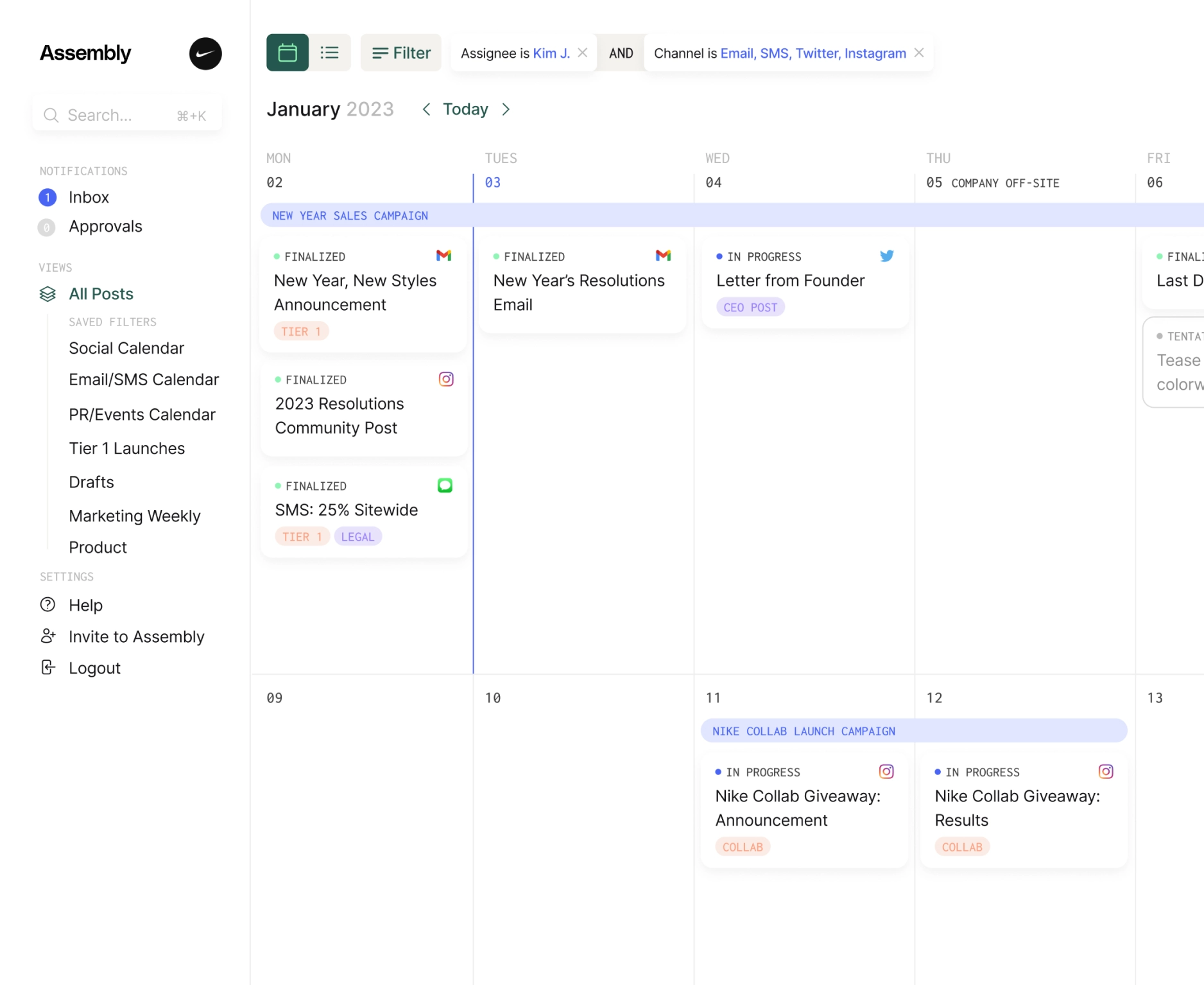
Interview with Bella Rose Mortel, Social Media at beehiiv

If you talk to 10 people in a room, there’s a likely chance that at least eight of them are subscribed to a newsletter. After all, what makes a newsletter so attention grabbing compared to other forms of online communication? Unlike social media, an email list’s audience is owned forever and if you’re a content creator, the chances of your audience seeing your email is dramatically more predictable vs an Instagram post that’s dependent on an algorithm.
Many content creators, thought leaders, and business operators in the past year have pivoted to launching their own newsletter and it’s even easier now with companies like beehiiv. The New York-based beehiiv recently raised $33 million, funding that it will be using to expand its business as well as the technical capabilities of its platform (via TechCrunch).
The future of the newsletter medium is here to stay and today, we’re talking with Bella Rose Mortel who leads social and community at beehiiv.
We’re excited to have you here. Can you give us an introduction?
Thanks for having me on. I'm Bella Rose. I live in Austin, Texas. And right now I'm the Social Media Strategist for beehiiv. beehiiv is a newsletter platform, [we] basically want to take the guesswork out of having everyone create a newsletter. And beehiiv gives you all the tools you need to monetize and grow your newsletter and make it into a real business for yourself. Before beehiiv, I was at Workweek, which is another media company based here in Austin. And then before that, I was at MorningBrew in the branded content team. So I’ve basically been around newsletters and media a lot for the past couple of years.
How do you go about your content/social strategy? And does that differentiate by the platform you're on?
Yeah, it kind of does. So the main platforms I'm in charge of are Twitter, LinkedIn, Instagram and TikTok. Whenever I first joined the team, beehiiv fan-boys and really devoted users were already on Twitter and LinkedIn. So the brand already had an audience there that kind of just required more of a nurture sort of situation, like I joined and I added a little more personality to the accounts.
But at the end of the day, the brand already had big followings and people who would get super excited about, “oh, now you can add three columns in your newsletter,” or optimized deliverability of an email. There were already people on Twitter and LinkedIn who were super excited about that sort of really bottom funnel type of content.
But on Instagram and TikTok, it's very new for us still. We're past the point on Instagram and TikTok of throwing shit at the wall and now we're getting a better idea of what's working for us, but we're relatively new to that space. A reason why it makes sense for us to be there is because we also have a talent initiative at beehiiv, which is essentially, reaching out and getting in front of bigger celebrities, influencers, people who have big followings on social media.
And we want to help them realize that a newsletter is the best thing for the next step for their content creation journey. Those are obviously not the people who are really gung ho about email deliverability and the smallest little things about our product.
So we kind of market ourselves a little bit more towards content creators about how to get started [with newsletters] and posting more educational content on those platforms. Whereas on Twitter and LinkedIn, we're able to do a little bottom funnel stuff that still performs really well and people are really excited about.
How do you think about content types and pillars on Twitter and LinkedIn (bottom of funnel) versus like an Instagram or TikTok (top of funnel)?
Good question. So I would say that our Twitter and LinkedIn is very product focused. We post two to three times a day. Often it'll be a GIF or a video showing something in our product, like something cool you can do. So it's very product first.
And then we're integrating little jokes and memes and of course, retweeting all of our users who are showing their success and their news that are growth.
In terms of more top of funnel content for Instagram, TikTok, on TikTok, I definitely do lean into the trends. We also take a lot of inspiration from our blog content for Instagram so we have a ton of blogs about “how to monetize your newsletter” like, “how to get started,” “how to get your first thousand subscribers.” We really lean into that the most on Instagram because I feel like there's more people trying to learn [about starting a newsletter] instead of people who are already there [on Twitter and LinkedIn], because they're fans of the product in general.
You guys definitely have a lot of a personality and lean towards a more fun social presence. I'm curious how you even navigate that at the company.
My social media manager opinion is that if you're running a brand account, you have to be funny, like you have to appeal to the humor that is, you know, for normal people because at the end of the day, this is literally a software product. And I'm like, “if all I was doing was reading about all the things you could do on beehiiv, I’ll be like, “yeah, okay, whatever” like no one cares.
So I really think that it's better to appeal that way because in organic social, my main goal isn’t making a sale. I don't think I'm going to post something, someone's going to click on the link in my bio and then they're going to purchase our highest plan. That's just not how human nature works. My goal is, whenever people are thinking about starting a newsletter, beehiiv is the number one thing that comes to their mind.
I saw some reports somewhere that people are more likely to buy from, you know, brands they enjoy like reading their content from. So I thought, how do we make things that are enjoyable while also shamelessly plugging the product? So every funny tweet from beehiiv probably has the word newsletter in it or email in it. So it's all super niche. I'm not doing random funny things for the sake of being funny.
What are the success metrics beehiiv thinks about when it comes to organic social?
So it kind of depends. In terms of broader company goals, impressions are what we track there. Of course it’s always important to know much reach we're getting, how many eyeballs we're getting. In my monthly reports, there's likes, comments, shares, link clicks, and all those vanity metrics that we love to think are important — but another thing that I personally, think is really important for organic social is more qualitative.
Vanity metrics can only tell you so much. Like how people are actively replying to you and tweeting at you is just so much more important from a community standpoint.
I love screenshotting all of those comments we get, all those replies we get that are like, “this is so funny” or like, “I love this brand account” or anything where people are like resonating with what we're posting resonating with our content because that is really telling of the community. And that's not something you can really measure with numbers.
Ready to start growing on social media?
Assembly is an end-to-end social media management tool. Join 500+ marketers and agencies who have made the switch.






